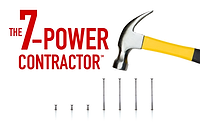
Customer service reps at your company can no longer be good at just handling the calls that come in. Your company needs to build them into what I call “outbound CSRs.” That means they get on the phone and create work that keeps you busy, especially during the normally slow times and in this slowing economy.
To qualify to become an outbound CSR, a CSR must first demonstrate that he or she can make customers happy when taking the inbound call and do more than record the information. The CSR has to prove he or she can engage customers in a positive way and create the positive momentum for the upcoming service call. We only want those CSRs who have people skills and are seeking ways to make more money in a legitimate way that benefits the customer, the company and themselves.
What does an outbound CSR do? He or she follows up on proposals not closed by the system engineers (what I call “salespeople”) and service work not closed by the service techs. For example, outbound CSRs would get on the phone when business gets slow to call for plumbing, heating, cooling or electrical inspections. They call customers to see if they’ve given any more thought to the additional tasks recommended by the tech or for a large installation recommended by the system engineer.
This position works best Monday through Friday from 10 a.m.-7 p.m. and Saturday from 10 a.m.-4 p.m. It also gives back-up to the existing 10 a.m.-7 p.m. CSRs, which today is a must for any company hoping to cash in on after-hours calls.
This position requires a series of short scripts and a lot of phone role-playing. These mock calls should be recorded so there’s audio feedback and coaching done to improve skills.
Here are three outbound CSR scripts my clients use:
1. Follow-up on unsold service work proposed by the service tech and unclosed proposals by the systems engineer.
Once a week, gather all the tasks service techs recommended to their customers and all the unclosed system engineer proposals. Review each and find all the unsold items.
-
“Hi, this is Al from Appleseed Plumbing, Heating, Cooling and Electric and I’m
calling because there was work recommended during your recent visit from our
(service tech or system engineer). Are you interested in having the work done?”
-
“May I get you on our schedule to get this work completed for
you?”
-
“Would you like me to schedule a follow-up call for you?”
Once a week, gather residential invoices for calls done for customers who are not yet service agreement customers.
-
“Hi, this is Al from Appleseed Plumbing, Heating, Cooling and Electric and I’m
calling to thank you for allowing us to solve your [plumbing, heating, cooling
or electrical] problem. I notice you didn’t take advantage of our service
agreement plan. I just wanted to make sure our technician reviewed all the
great benefits with you and left you a copy.
Did you know many of our customers love the free intensive plumbing inspection (or heating or cooling tune-up or intensive electric inspection) that is a vital part of this valuable agreement? You also get ‘Front of the Line Service’ on busy days.”
-
“If you’d like, I could send you some wonderful customer testimonials from
people just like you who have enjoyed the benefits of the service agreement
club.”
Then, say the following:
-
“May I sign you up so you, too, can take advantage of these great service
agreement benefits?”
Go though your customer database and call each customer that doesn’t have an e-mail address on file.
-
“Hi, this is Al from Appleseed Plumbing, Heating, Cooling and Electric. While
reviewing our customer files, I noticed you weren’t taking advantage of our
exclusive e-mail club. We offer great money-saving tips and answer common
plumbing, heating, cooling and electric problems.
Plus, we offer exclusive discount coupons that are only available to E-mail Club Members. And you can rest easy knowing that we don’t share, sell or rent out our e-mail list to anyone.”
-
“Would it be OK to send you an e-mail that better explains the features,
benefits and advantages of this exclusive E-mail Club? While I have you on the
phone, are there any [plumbing, heating, cooling or electrical] problems we can
solve for you today?”
-
“I understand. I’m sure you’re pretty busy this time of year. Before you go,
would you like to go ahead and take advantage of the free newsletter offer we
included in your mailer? It’s full of secrets and hints to help you protect
your home with helpful tips. All I’ll need is your e-mail address to get you
signed up. And if you decide it’s not for you, you can simply opt-out.”
Follow this process of creating powerful outbound CSRs and you can stop waiting for your phone to ring; you can start making it ring!


